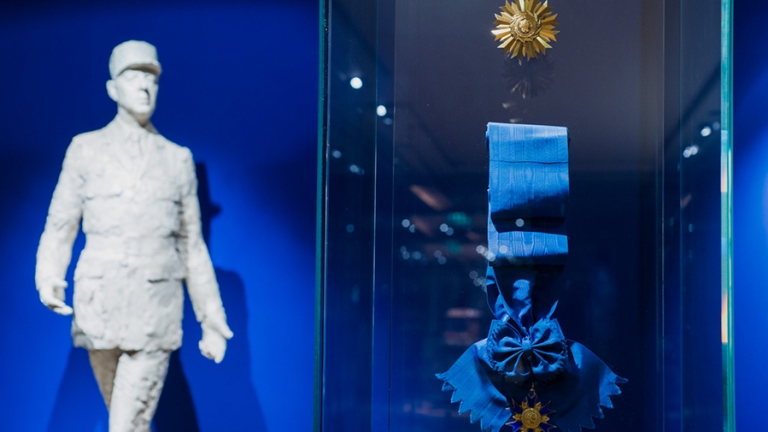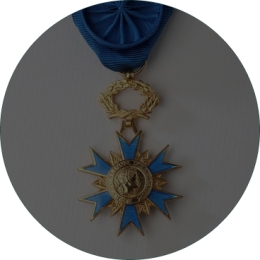An institution of the French Republic born in the middle of the 20th century, the National Order of Merit is the second national Order after the Legion of Honor. Its purpose is to reward "distinguished merit" and encourage the lifeblood of the country.
In 60 years of existence, the National Order of Merit has won a full place of its own in French society.
Its mission
Like the Legion of Honor, the National Order of Merit is a universal order honoring individuals from all fields of activity.
It is the second national Order, designed to honor French citizens in complementarity with the Legion of Honor.
The length of service required to obtain the blue ribbon is shorter than for the Legion of Honor (10 years vs. 20 years). The Order’s purpose is threefold:
To reflect a dynamic society
The National Order of Merit is intended to accommodate younger generations whose “valor does not await the passing of years.” It is responsible for stimulating individual energy, uniting all intentions, and rewarding innovation and contributions to the renown of France.
To set an example
The Order is designed as a form of emulation so that all give their best and so that the community of recipients as a whole represents the civic spirit of France.
To recognize diversity
Finally, the National Order of Merit embodies the diversity of French society, its different cultures and social origins, and its new economic sectors (technology, internet, telecom, etc.). It recognizes the commitment of the younger generation. Like the Legion of Honor, the National Order of Merit ensures true equality of access, so that all deserving citizens, whatever their place in society, can be recognized by the nation.
Award criteria
- Distinguished military or civil achievements. In other words, acts of devotion, bravery, generosity, real merit or a measurable commitment to serving others or France, with qualifications not yet sufficient to warrant the Legion of Honor.
- Demonstrating at least ten years of service
- Accession to a higher rank when new merits are established
- It takes a minimum of five more years to be promoted to Officer, three years to reach the rank of Commander, three years to be elevated to the title of Grand Officer and three more years for the Grand Cross.
The National Order of Merit in numbers
The history of the National Order of Merit
The creation of the National Order of Merit, 3rd December 1963, results from a broad reform of the decoration system initiated in 1958 by the Grand Chancellor at the time, General Catroux, with the support of General de Gaulle, in a country in the midst of modernization.
General de Gaulle, who had already founded the Order of Liberation during World War II, was deeply involved in creating this new order.
He gave it four objectives:
- To strengthen national unity, five years after the founding of the Vth Republic.
- To reassert the value of the Legion of Honor, which suffered from inflated numbers of members following the major conflicts of the twentieth century.
- To harmonize and simplify honors. It was urgent to stop the proliferation of decorations of all sorts created by the various ministries, which reached the record number of 70 decorations and 20 orders.
- To organize the scale of merits in a hierarchy with a new, complementary distinction reserved for actual merits recognized earlier. Beginning with the first awards, highly eclectic merits and precocious careers were recognized, illustrating a selection philosophy that has been upheld to this day.
Organization of the Order and admission process
The National Order of Merit has its own organization; its discipline and hierarchy are modeled after the Legion of Honor. It has its own council of 12 members, chaired by the Grand Chancellor of the Legion of Honor, Chancellor of the National Order of Merit, under the authority of the Grand Master, the President of the Republic. The Council of the Order has the power to review, deliberate and punish. The process for awarding a rank in the National Order of Merit is similar to that of the Legion of Honor.
Annual admissions
Two civilian cohorts: May and November
Two military cohorts: April-May and November
The latest cohorts
Insignia
The insignia of Merit is a six-armed Maltese asterisk enameled blue, suspended from a wreath of intertwined oak leaves.
The central disc is surrounded by intertwined laurel leaves. The obverse depicts the effigy of the Republic (head of Marianne) with the legend "République Française". The reverse disc has two tricolor flags with the inscription “National Order of Merit” and its founding date, "December 3, 1963."



